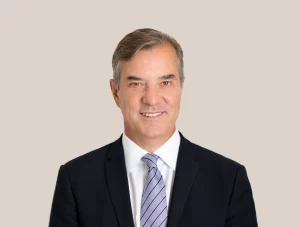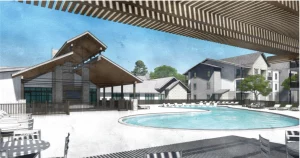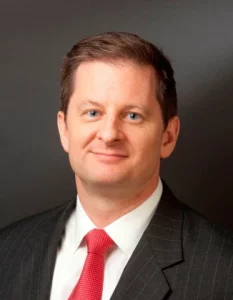Insights from Taurus Investment Holdings about the green features expected by Millennials and Gen Z.
Owners’ and developers’ inclination toward green building practices and growing care for the environment is on the rise. At the same time, green building practices represent a good incentive for investors, as these properties sell for higher prices, spend less time on the market and rent easier at higher rents than standard properties.
Closing the loop are the residents, showing an increasing predisposition toward eco-conscious living quarters. Communities that boast green building features are typically newer and equipped with energy-efficient systems for which the renters are willing to pay more. And younger generations show more interest in slowing or stopping the fast changes the climate is exhibiting, and they express that through more concern for green building features.
A telling example of a sustainable community is Whisper Valley, one of the largest zero-energy capable developments in North America, spanning 2,000 acres in Austin, Texas, and built by Taurus Investment Holdings and its subsidiary EcoSmart Solution. A much-discussed feature used at Whisper Valley is the GeoThermal Exchange, a system that will be installed at the multifamily component by way of individual packaged Ground Source Heat Pumps (GSHP) that provide both indoor climate control and domestic hot water preheating for each apartment unit, according to Greg Wolfson, CTO at EcoSmart Solution.
“The use of packaged GSHPs with integrated air handling makes their integration seamless to the standard air ductwork within apartment units. The GSHP within each unit conditions the apartment’s indoor air to meet the occupant’s requirements through smart thermostat control,” Wolfson said. Another fascinating thing about the geothermal exchange system is its ability to be designed in accordance with the local ground conditions at each site.
Taurus Investment Holdings CEO Peter Merrigan and Managing Director of New Energies and Sustainability Eric Bradley joined the conversation on what it takes, as a multifamily developer, to meet the eco-conscious demands of the younger generations.
Is green building still perceived as luxury living?

Merrigan: We think the perception is changing; green is no longer considered a luxury but more of a necessity to modernize older properties and to create state-of-the-art new properties that will retain value over time and add to the quality of life for the residents.
What are the main factors triggering this shift of focus on higher-performing green assets?
Bradley: Consumer demand, new regulatory building mandates and government programs incentivizing sustainable buildings are the main factors triggering the shift to a focus on higher-performing green assets. Additionally, investors are prioritizing business opportunities that meet environmental, social and governance criteria, so no matter the stakeholder—whether it’s the renter, landlord, builder or developer—there is a drive for greener housing opportunities on all levels.
While we are witnessing this massive movement in the real estate industry toward being “green,” the reality is that the majority are falling short of what needs to be done.
Why do younger generations prefer sustainable brands and more eco-conscious rental units?
Merrigan: Millennials and Gen Z prefer sustainable brands because they understand the impact those brands have, and that resonates. As the first truly digitally native generation, Gen Z has grown up subject to seeing and living in the damage of past generations, witnessing the effects of extreme weather like wildfires, floods, hurricanes and other natural disasters. Both Gen Z and Millennials have a greater depth of knowledge about the built environment and its contribution to greenhouse gas emissions, and that influence has already begun to drive demand for more eco-conscious rental units.
How does one reduce the carbon footprint of a new development? Which methods are most reliable?
Bradley: We think of the carbon footprint as two components: the embodied carbon in the materials used to build the structure and the operational carbon, which arises across the life of the asset. There are many advances being made to offer lower carbon materials—such as using recycled materials and wood as examples. In order to reduce the operational footprint, it depends on the equipment installed to consume and produce energy. We start with the building envelope first. This includes doors, windows, wall and roof insulation.
Next are highly efficient appliances, including heating and air conditioning, as well as the hot water system. One of the largest sources of carbon emission can be room heating and domestic water heating for buildings. Statistics from the Department of Energy show that nearly one-third of real estate emissions come from on-site hydrocarbon use.
We deploy ground-sourced heat pumps in our developments—these are reliable, highly efficient, proven technologies that significantly reduce the energy needs for a property. Our analysis, as well as third-party studies, show that ground-sourced heat pumps are cost-effective to the owner over a 20-year period.
Doing everything up to this point can get emissions to half or more over traditional construction. However, we go further and include photovoltaic solar, which reduces net-energy consumption and emissions to below 20 percent of a traditional building.
Some in our industry prefer to go directly to solar, skipping the energy efficiency step. They oversize a solar system without doing the deep energy efficiency investments. We think that is a missed opportunity to get a more resilient system that is also less exposed to energy price changes, and able to accommodate future electrification loads, like those from electric vehicle charging.
Finally, we include energy monitoring tools that can help consumers further manage their behavior. With all of these in place, we have some customers who can approach close to net-zero energy.

What are the main challenges in the development of multifamily properties?
Merrigan: Continued construction cost volatility and a shifting landscape in how construction lending is priced and financed.
Are current environmental regulations adding to the housing crisis?
Bradley: While there may be more stringent requirements to meet water scarcity, flood or fire risks, those have been in place for a while and ensure that new developments are properly sited and will be viable in the long term against transition risks. The energy efficiency technologies we are focused on will significantly reduce energy consumption and lower overall occupant costs. The real challenges at present are material costs, supply chain challenges in getting materials in a timely manner, and skilled labor availability.
How are all of these challenges impacting the focus on sustainability?
Merrigan: It is a challenge, as is any development right now, but we believe that by delivering a superior product we can realize the value that results in a better living experience and better retention in our communities. It is important to remember that sustainability efforts pay for themselves—in the form of energy savings—and sustainability itself has only become a more compelling proposition in a highly volatile and expensive energy environment.
Have you started work on the multifamily component at Whisper Valley? Tell us more about the project’s timeline and the amenities that set it apart from others.
Merrigan: We are in the final stages of permitting and are scheduled to break ground at the beginning of 2023. The development will offer a best-in-class amenity package that includes dedicated green space, on-site pocket parks, resort-style clubhouse and pool, oversize dog park, playground area, organic community gardens and direct access to the master trail system at Whisper Valley.
Green aspects include heating and cooling and hot water supply through a geothermal loop system, electricity through a solar array, electric vehicle charging stations and an energy monitoring system that allows the residents to realize increased energy savings on a unit-by-unit basis.
All our multifamily developments will focus on applying sustainable solutions across the communities, creating high-quality living spaces, and increasing the value of the overall development, while also offering residents significant energy savings and a more comfortable way of living.
What combination works best for real estate developers to meet demands for innovation while navigating the increasing cost of construction?
Merrigan: You cannot let innovation be the only experience you provide to the residents in your community. Coupling best-in-class amenities and living experiences with sustainability allows the residents to get the best of both worlds.
Read the full article at www.multihousingnews.com | Meeting the Eco-Conscious Demands of Young Renters
